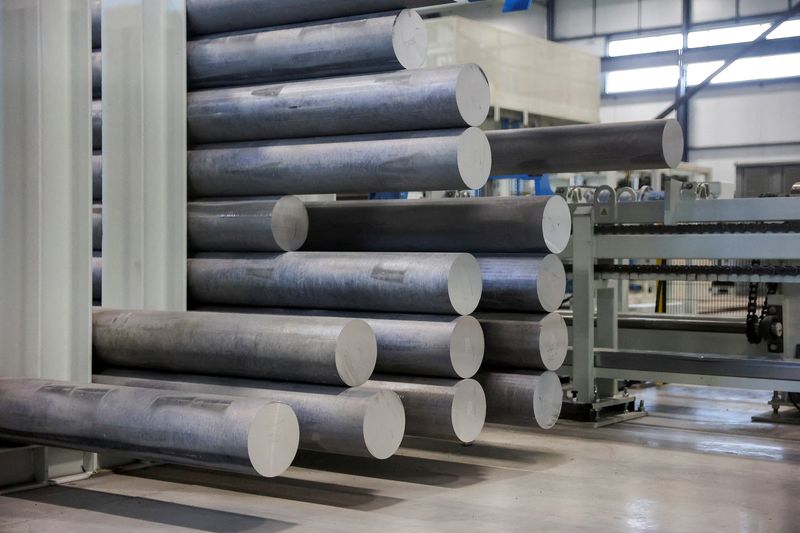I touched down in Montreal two days after the Biden administration’s bombshell tariff announcement, finding the aluminum sector caught between panic and strategic planning. The industry that employs 10,000 Canadians directly and sustains another 60,000 supporting jobs now faces a potential 25% tariff wall from its largest customer.
“This isn’t just about metal,” Quebec Economy Minister Pierre Fitzgibbon told me during a hastily arranged interview at his downtown office. “This is about communities in Saguenay-Lac-Saint-Jean and across Quebec that depend on these smelters for their economic survival.”
The proposed U.S. tariffs, announced last week as part of a broader national security package targeting Chinese aluminum and steel, have sent shock waves through Canada’s $10 billion aluminum industry. Despite being crafted primarily to counter Chinese industrial capacity, the collateral damage to Canadian producers could be severe.
In response, Ottawa is considering significant financial support measures for affected aluminum producers. These could include tax breaks, direct subsidies, or even government-backed purchases to stabilize the market. Industry Minister François-Philippe Champagne emphasized that “all options remain on the table” during our discussion at a Quebec manufacturing facility.
The aluminum showdown represents the latest test of the recently implemented CUSMA trade agreement. Under the deal’s terms, Canada expected protection from such unilateral actions. Canadian aluminum executives I spoke with expressed frustration at being caught in what they view as America’s China strategy.
“We operate some of the cleanest smelters in the world, powered almost entirely by hydroelectricity,” explained Jean Simard, president of the Aluminum Association of Canada. “The carbon footprint of our aluminum is about one-tenth of Chinese production. If climate considerations matter in trade policy, we should be the preferred supplier.”
Economic analysis from TD Bank suggests the proposed tariffs could shave up to 0.4% from Quebec’s GDP growth if implemented without mitigation. The province produces over 90% of Canada’s aluminum, making it particularly vulnerable.
Behind closed doors, Canadian officials are exploring WTO challenges while simultaneously negotiating for exemptions. A senior Global Affairs Canada official, speaking on condition of anonymity due to ongoing diplomatic efforts, revealed that “technical teams are working around the clock to demonstrate the integrated nature of North American aluminum supply chains.”
The situation has particular resonance given the 2018 steel and aluminum tariff crisis under the Trump administration. Those measures remained in place for nearly a year before being lifted, causing significant economic disruption.
What’s different this time is the speed of Canada’s response. Within 48 hours of the U.S. announcement, Finance Minister Chrystia Freeland had assembled an industry task force and begun developing countermeasures. During our brief exchange following a stakeholder meeting, she emphasized that “Canada stood firm before, and we will stand firm again.”
In Saguenay, the heart of Canada’s aluminum production, I witnessed community anxiety firsthand. At a local diner where many Rio Tinto employees gather for lunch, conversations revolved around potential layoffs.
“My father worked at the smelter, and now I do too,” said Marc Tremblay, a third-generation aluminum worker. “These jobs are the backbone of our region. Without them, what happens to our towns?”
The situation highlights the vulnerability of resource-dependent communities to trade disputes. According to Statistics Canada data, regions like Saguenay-Lac-Saint-Jean have limited economic diversification, making them particularly susceptible to industry-specific shocks.
U.S. trade representatives justify the measures as closing loopholes that allow Chinese aluminum to enter America through third countries. However, Canadian producers argue this reasoning ignores the rigorous tracing and verification in the North American supply chain.
The Aluminum Association, representing U.S. producers, has notably broken with the Biden administration on this issue. In a statement released yesterday, they emphasized that “Canadian aluminum is essential to U.S. manufacturing” and called for maintaining integrated North American supply chains.
Political observers note the timing coincides with an election year in the United States, where trade protectionism often gains traction during campaign seasons. The battleground states of Michigan, Wisconsin, and Pennsylvania all have significant aluminum processing operations that could benefit from such protections, at least in the short term.
Canada’s potential support package for its aluminum sector would need to carefully navigate international trade rules. Direct subsidies could trigger additional complaints from U.S. trade representatives or other aluminum-producing nations.
As I prepared to leave Montreal for meetings in Ottawa, industry stakeholders were mobilizing a coordinated response. The message was clear: Canada’s aluminum industry is prepared for a prolonged fight, but hopes diplomatic channels will prevail.
“We’ve been through this before,” remarked one veteran industry consultant as we parted ways. “The difference is that this time, we know exactly what to do – and we’re not waiting to do it.”






